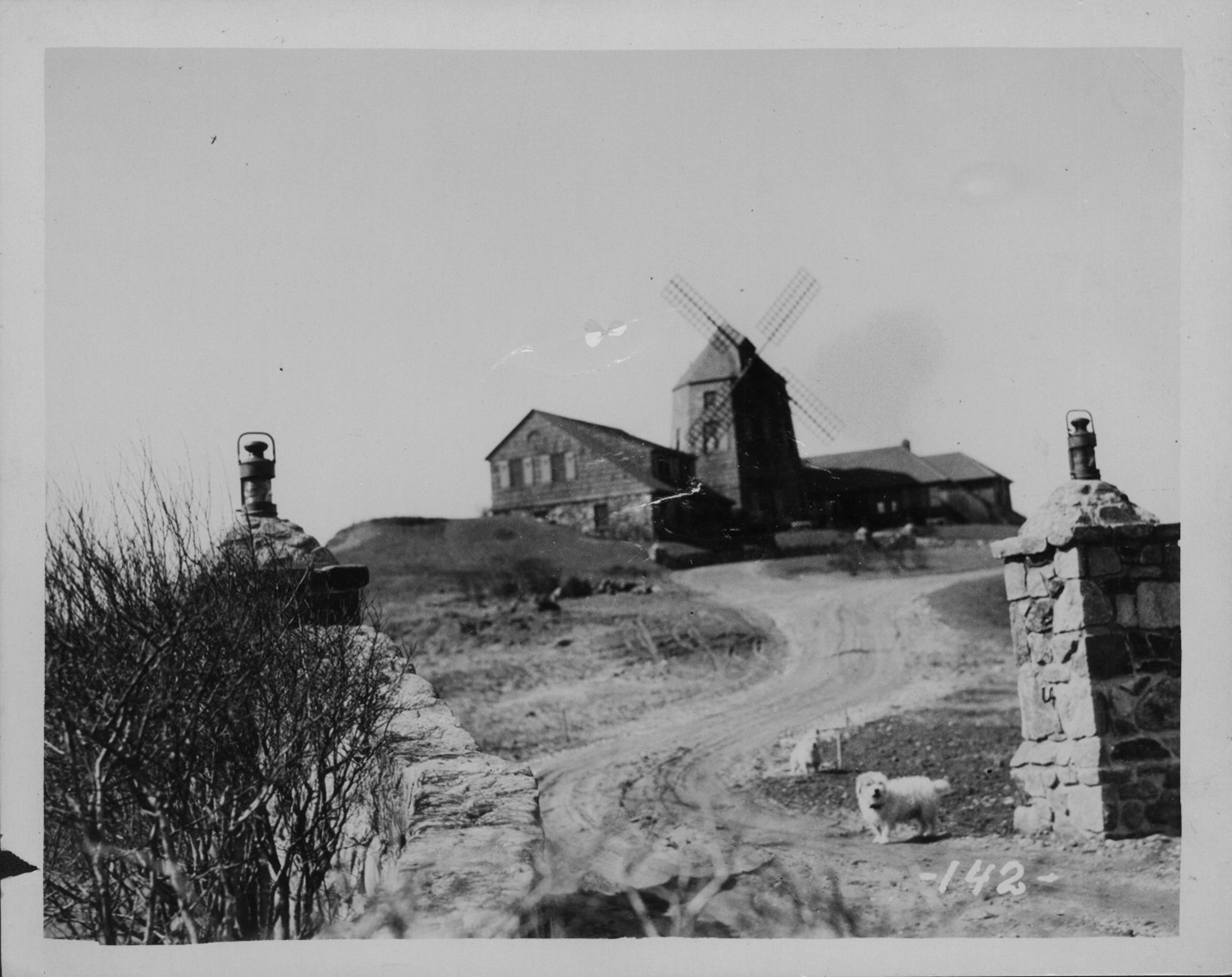
The house that used to stand on Sandpiper Hill, an oceanfront estate just west of Ditch Plains, was built for a Wall Street broker named Walter P. McCaffray in 1928, during the same gilded age that enticed Carl Fisher to stick shovels into the wild Montauk landscape. In fact, Fisher’s architect, Richard B. Webb, also designed the McCaffrays’ house, whose windmill was merely decorative.
“Just inside the door was a powder room that was, like the windmill that was part of the house, octagonal. Each of its eight walls was covered with handblown, pink glass mirrors, which allowed the person sitting on the seat of ease a view of himself in infinite regression,” wrote Russell Drumm in the East Hampton Star in 2003, decades after the house was gone. At the top of the mill section was a library filled with books about local history. On the sand below the cliff was a beach house built in the shape of a boat; it even had showers and a deck for cocktails.

The McCaffrays were key supporters of establishing a Catholic church in Montauk, especially given their friendship with a priest who’d been friendly with Colonel Teddy Roosevelt when his troops were recuperating in Montauk at Camp Wikoff (whose Black Buffalo Soldiers happened to camp at Sandpiper Hill). “As far as we can tell, the first Mass was offered in Montauk … at Camp Wykoff,” a notes a history of St. Therese of Lisieux Church, which was completed in the early 1930s.
The stock market crash came in 1929, and Walter McCaffray died by suicide in 1935. In 1940 his widow, Alys Mary McCaffray, left the Montauk estate to a Catholic order to use as a retreat for ailing or retired Jesuits whom she requested to say daily masses for her own soul and that of her husband. After a few years the Jesuits sold the property to Sidney Rheinstein, another stockbroker, for whom the current Rheinstein Park is named.

Reply or Comment